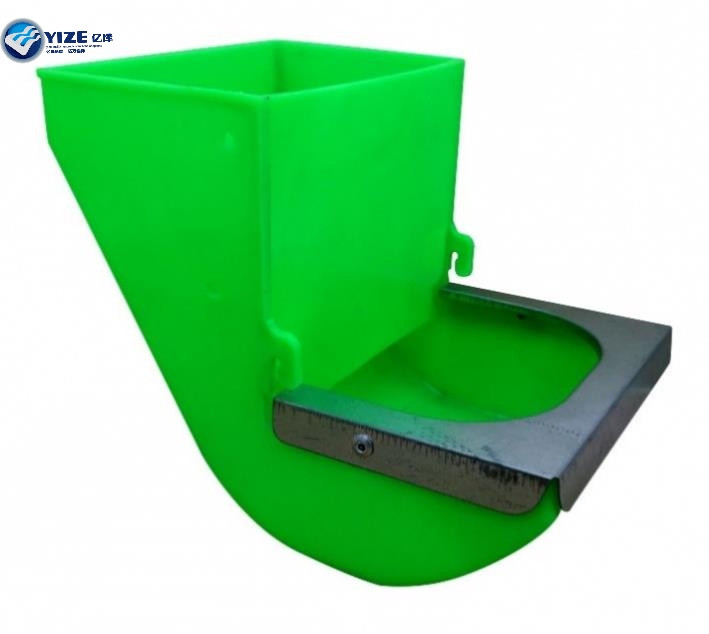Innovative Chicken Layer Cages Design for Enhanced Poultry Farming Efficiency and Comfort
Aug . 13, 2024 22:06 Back to list
Innovative Chicken Layer Cages Design for Enhanced Poultry Farming Efficiency and Comfort
The Benefits of Using Chicken Layer Cages for Poultry Farming
Poultry farming has seen significant advancements over the years, particularly in the way farmers manage the health and productivity of their flocks. One notable innovation is the chicken layer cage system, which offers numerous advantages over traditional rearing methods. This article explores the benefits of chicken layer cages, focusing on efficiency, animal welfare, and economic viability.
Enhanced Space Utilization
One of the primary benefits of chicken layer cages is efficient space utilization. In traditional free-range farming, chickens often require large areas to roam, which can lead to uneven distribution of resources and increased risk of disease. Layer cages, on the other hand, allow farmers to maximize the number of hens per square foot. This vertical stacking of cages not only conserves space but also simplifies the management of poultry operations, making it easier to monitor the health and productivity of the birds.
Improved Biosecurity
Another significant advantage of using chicken layer cages is enhanced biosecurity. Caging systems help to prevent direct contact between flocks, which can reduce the spread of diseases such as avian influenza and salmonella. Cages also facilitate easier cleaning and maintenance, minimizing the risk of bacterial contamination. With birds housed individually or in small groups, any signs of illness can be quickly identified and addressed, ensuring the overall health of the flock.
Increased Egg Production
Chicken layer cages are designed to optimize the laying conditions for hens. By providing a controlled environment that includes proper lighting, ventilation, and access to food and water, these cages can increase egg production rates significantly. Research indicates that hens housed in layer cages often produce more eggs compared to those raised in free-range settings. This increased production translates to higher profitability for farmers, making layer cages an economically attractive option.
chicken layer cage for poultry

Labor Efficiency
The use of chicken layer cages also enhances labor efficiency in poultry farming. Automated systems can be integrated into cage designs to facilitate feeding, egg collection, and manure management. This automation reduces the need for manual labor and helps lower operational costs. With efficient systems in place, farmers can manage larger flocks with less manpower while ensuring that the welfare of the birds is maintained.
Better Egg Quality
In addition to increasing the quantity of eggs produced, chicken layer cages contribute to better egg quality. The controlled environment of the cages helps reduce stress on the hens, leading to a consistent supply of high-quality eggs with fewer defects. Furthermore, the reduced risk of contamination and disease in caged systems ensures that the eggs remain clean and safe for consumption.
Welfare Considerations
While there are valid concerns regarding animal welfare in caged systems, modern chicken layer cages are designed to address these issues. Many manufacturers have developed enriched cages that provide hens with improved living conditions, such as nesting areas, perches, and more space to move. These enhancements help ensure that the hens can exhibit natural behaviors while still enjoying the benefits of a cage system.
Conclusion
In conclusion, chicken layer cages represent a viable solution for modern poultry farming, offering numerous benefits including enhanced space utilization, biosecurity, increased production, and labor efficiency. As the demand for poultry products continues to rise, investing in layer cage systems can provide farmers with a competitive edge while also ensuring the welfare of their birds. By embracing these technologies, poultry farmers can not only meet market demands but also promote sustainable practices in the industry.
-
Hot Sale 24 & 18 Door Rabbit Cages - Premium Breeding Solutions
NewsJul.25,2025
-
Automatic Feeding Line System Pan Feeder Nipple Drinker - Anping County Yize Metal Products Co., Ltd.
NewsJul.21,2025
-
Automatic Feeding Line System Pan Feeder Nipple Drinker - Anping County Yize Metal Products Co., Ltd.
NewsJul.21,2025
-
Automatic Feeding Line System - Anping Yize | Precision & Nipple
NewsJul.21,2025
-
Automatic Feeding Line System - Anping Yize | Precision & Nipple
NewsJul.21,2025
-
Automatic Feeding Line System-Anping County Yize Metal Products Co., Ltd.|Efficient Feed Distribution&Customized Animal Farming Solutions
NewsJul.21,2025






